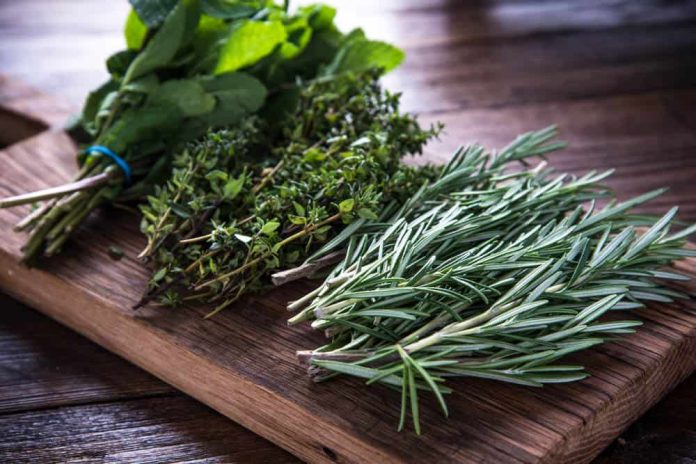If the collapse happens and you are in survival mode, your long-term food requirements must be taken into consideration. Finally, whatever food you have packed away will run out and then you will have none in your cupboard. For this reason, you need to use the time that you consume to grow your own food in your food stores, food that will be ready when your stores are gone.
Perhaps the most important thing to consider when it comes to increasing food for survival is that when it comes to ease of growth certain foods are better than others, nutritional content, caloric content, and ease of storage. That is why, you need to have good knowledge of the best foods to grow for survival, particularly if you have limited space or are trying to decide which kinds of seeds to stockpile.
How Native Cultures Did It
Thousands of years ago, native communities around the world learned that agriculture was an important part of survival. Hunting and foraging could only take us so far and it gave us a more reliable source of food being able to plant crops. In North America, several tribes had subsisted on what they called the three sisters most of the year, which were corn, squash, and beans. Similarly, South America relied on corn and beans; and potatoes. People in China have raised enough food on a few acres of land for thousands of years to feed their families, and still have enough to barter for other products. Such ancient cultures are strong examples of how to survive farming.
The Hardy Foods
First, growing your own food, nothing is off limits. You can grow anything you want to include in your diet and you will have a great abundance of food during the summer months. Things like tomatoes, peppers, lettuce, and broccoli are all great foods to grow, vitamin-rich and mineral-rich. But, these aren’t the hardy foods that will get you through the winter, especially when your preservation methods are limited. Ideally, you want food that once it has been harvested, it can be stored as is or dried and prepared for winter use. For this reason, the suggested staples to plant and grow for year-round sustenance are as follows, starting with the three sisters.
Beans
 For so many reasons, beans are one of the very best staples. First, they are very high in protein, vitamins, and minerals, and they are also very high in calories, providing most of the survival energy needed. But beans are very flexible, too. They can be freshly eaten off the plant or dried on the vine, harvested, and processed. When dried, beans have an incredibly long shelf-life. They can be prepared in a wide variety of ways, for instance in soups, baked and eaten with breads, or simply eaten alone. Its versatility as a meal is almost infinite. Finally, beans give back nitrogen to soil, other crops need something else. It makes them a good crop for rotation.
For so many reasons, beans are one of the very best staples. First, they are very high in protein, vitamins, and minerals, and they are also very high in calories, providing most of the survival energy needed. But beans are very flexible, too. They can be freshly eaten off the plant or dried on the vine, harvested, and processed. When dried, beans have an incredibly long shelf-life. They can be prepared in a wide variety of ways, for instance in soups, baked and eaten with breads, or simply eaten alone. Its versatility as a meal is almost infinite. Finally, beans give back nitrogen to soil, other crops need something else. It makes them a good crop for rotation.
Corn
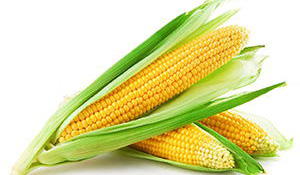 The first thing you need to know about growing corn for survival is you won’t raise your usual sweet corn. Instead, Native Americans grew grain corn, which was traditionally grown and dried on the stalk for harvesting and stockpiling. Corn is extremely easy to grow. It can be ground and processed into a variety of breads, and used as a soup thickener. Corn and beans can be combined to form a complete protein.
The first thing you need to know about growing corn for survival is you won’t raise your usual sweet corn. Instead, Native Americans grew grain corn, which was traditionally grown and dried on the stalk for harvesting and stockpiling. Corn is extremely easy to grow. It can be ground and processed into a variety of breads, and used as a soup thickener. Corn and beans can be combined to form a complete protein.
Winter Squash
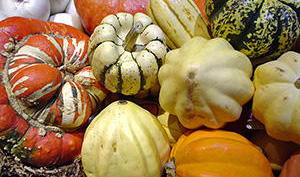 During the winter months winter squash is very hardy and easy to store. There are several varieties, for instance acorn, butternut, spaghetti, and Hubbard. Pumpkins fall under that group as well. Store them in a cool, dark place for up to 6 months and you’ll enjoy this nutritious staple together with your corn and beans.
During the winter months winter squash is very hardy and easy to store. There are several varieties, for instance acorn, butternut, spaghetti, and Hubbard. Pumpkins fall under that group as well. Store them in a cool, dark place for up to 6 months and you’ll enjoy this nutritious staple together with your corn and beans.
Related: How to Cook Spring Nettles
Potatoes
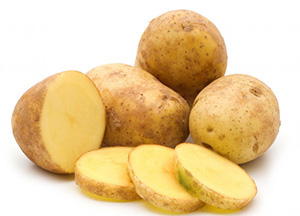 The humble potato might be associated with Ireland in the minds of many people (think the Great Irish Famine), but it is actually native to South America and was not known anywhere else in the world until after Columbus sailed. Potatoes are so easy to grow in a variety of climates and types of soils and their use has spread throughout the world. They will also sustain you when you have no other food available for an extended period of time.
The humble potato might be associated with Ireland in the minds of many people (think the Great Irish Famine), but it is actually native to South America and was not known anywhere else in the world until after Columbus sailed. Potatoes are so easy to grow in a variety of climates and types of soils and their use has spread throughout the world. They will also sustain you when you have no other food available for an extended period of time.
Carrots
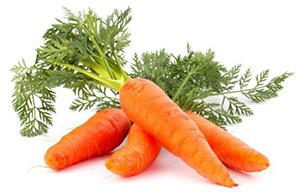 Also, carrots are a very good root vegetable that will store well during the winter months and provide essential nutrients and variety in your diet. You can grow carrots as long as you have sandy, well-draining soil. When you’re not in an area that’s going through difficult winters. you can cover your carrots with a thick mulch layer to shield them and just leave them to the ground. You can store them in a refrigerator or root cellar if you have to harvest them.
Also, carrots are a very good root vegetable that will store well during the winter months and provide essential nutrients and variety in your diet. You can grow carrots as long as you have sandy, well-draining soil. When you’re not in an area that’s going through difficult winters. you can cover your carrots with a thick mulch layer to shield them and just leave them to the ground. You can store them in a refrigerator or root cellar if you have to harvest them.
Cabbage
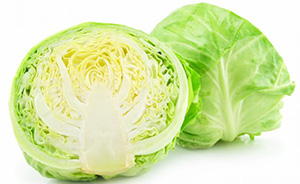 Cabbage is a worldwide staple and for good reason. It is easy to grow, easy to store, and high in nutrition, even when cooked. Cook it with other staples, like potatoes, make it into a soup for tasty meals, or ferment it to make Sauerkraut. Once fermented, cabbage will last even longer and provide the body and the digestive tract with a wealth of nutritional benefits.
Cabbage is a worldwide staple and for good reason. It is easy to grow, easy to store, and high in nutrition, even when cooked. Cook it with other staples, like potatoes, make it into a soup for tasty meals, or ferment it to make Sauerkraut. Once fermented, cabbage will last even longer and provide the body and the digestive tract with a wealth of nutritional benefits.
Kale
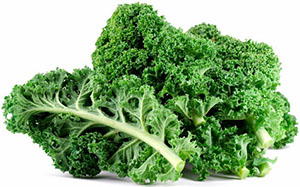 Kale is part of the same family of plants as cabbage and although it is not normally thought of as a staple of survival, it is a great crop to grow. Kale is so filled with nutrition, it helps keep your family from nutritional deficiencies that may weaken them and make them more susceptible to disease. It can be easily grown and it is cold-hardy, meaning you can grow it well into late fall or early winter. If you’ve got a cold frame, it can grow through the winter. You can add Kale to any food you cook, including soups, stews, and potato dishes. It can also be dried into kale chips, something that has become a common health food, but will store well throughout the year and keep you eating healthy greens.
Kale is part of the same family of plants as cabbage and although it is not normally thought of as a staple of survival, it is a great crop to grow. Kale is so filled with nutrition, it helps keep your family from nutritional deficiencies that may weaken them and make them more susceptible to disease. It can be easily grown and it is cold-hardy, meaning you can grow it well into late fall or early winter. If you’ve got a cold frame, it can grow through the winter. You can add Kale to any food you cook, including soups, stews, and potato dishes. It can also be dried into kale chips, something that has become a common health food, but will store well throughout the year and keep you eating healthy greens.
Sweet Potatoes
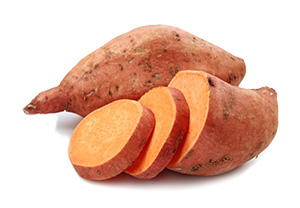
Sweet potatoes add fabulously to your staple foods. These are similar to potatoes, but they are better as they contain more nutrients and are edible for their greens. One plant can give you tubers, as well as greens. Sweet potatoes are easy to grow too. Though tropical and subtropical, they can be grown in the north. They’re a vine than runner roots swelling into the delicious tubers.
The sweet potatoes can be stored for a long time at room temperature. They’re going to keep at least a month or two, but if they’re healed, they ‘re going to keep for many months. Curing them means simply holding them at 85-90 degrees for the first five days after harvest, during which time a second skin will effectively develop.
Related: How I Grow My Herbs Indoors
Garlic
 Garlic is a wonderful addition to any garden which survives. It’s delicious and will add flavor to anything you’re cooking, but it’s so much more. It can be used as a medicinal plant aside from being a highly nutritious food. Garlic is a potent antibiotic and antiviral agent. This also helps improve the immune system, is a potent antioxidant, and reduces high blood pressure and cholesterol. Garlic grows easily and when harvested, it can be stored and used in the winter months while waiting for a new crop to grow.
Garlic is a wonderful addition to any garden which survives. It’s delicious and will add flavor to anything you’re cooking, but it’s so much more. It can be used as a medicinal plant aside from being a highly nutritious food. Garlic is a potent antibiotic and antiviral agent. This also helps improve the immune system, is a potent antioxidant, and reduces high blood pressure and cholesterol. Garlic grows easily and when harvested, it can be stored and used in the winter months while waiting for a new crop to grow.
Herbs
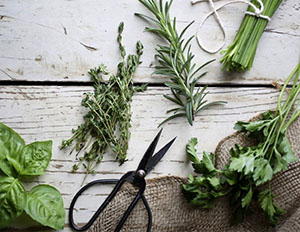 Herbs are highly flexible and they are very easy to store.Anything you might think of, such as rosemary, thyme, basil, bay leaves, parsley, and oregano, can be cultivated in the summer months, harvested and dried for use in the winter. Simply cut the plants, wash them, hang them upside down until they dry, then put them in a glass jar in a cool, dry place. Plus, many of the herbs that you use every day are perennials, meaning that once you plant them, they come back every year, giving you an ongoing annual herbal supply. Herbs will also provide you with the nutrients you need from vegetables, and added flavor to your food, something that will save you from a survival diet’s blandness.
Herbs are highly flexible and they are very easy to store.Anything you might think of, such as rosemary, thyme, basil, bay leaves, parsley, and oregano, can be cultivated in the summer months, harvested and dried for use in the winter. Simply cut the plants, wash them, hang them upside down until they dry, then put them in a glass jar in a cool, dry place. Plus, many of the herbs that you use every day are perennials, meaning that once you plant them, they come back every year, giving you an ongoing annual herbal supply. Herbs will also provide you with the nutrients you need from vegetables, and added flavor to your food, something that will save you from a survival diet’s blandness.
Start Now
The list above includes the best survival foods to grow, but you shouldn’t wait until the collapse to get started. The key is to practice now, before growing this food is a matter of survival. Make mistakes now (while you can still go to the grocery store and buy food).
Even if you choose to begin with only one or two of the foods listed above, get started and learn how to grow food that will keep you and your family alive and healthy no matter how tough times get…
…because tough times never last; but tough people do!


